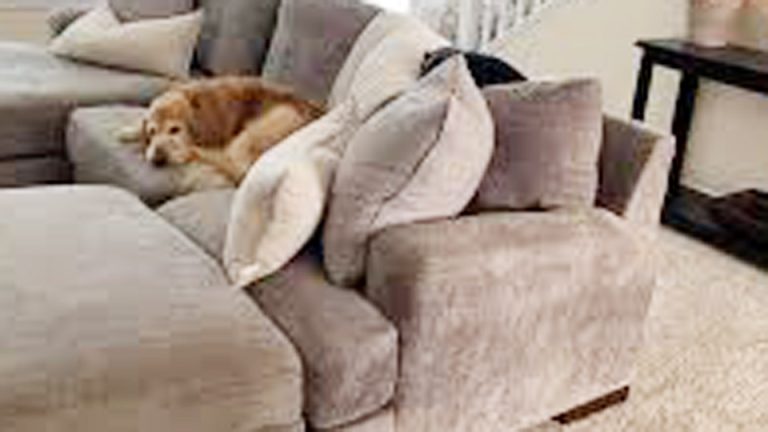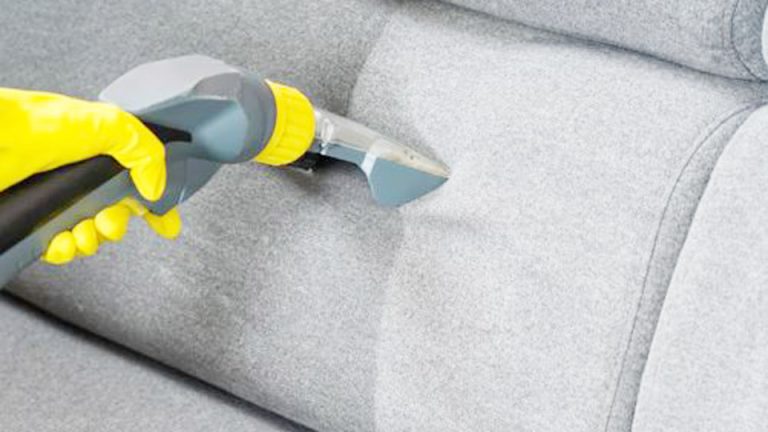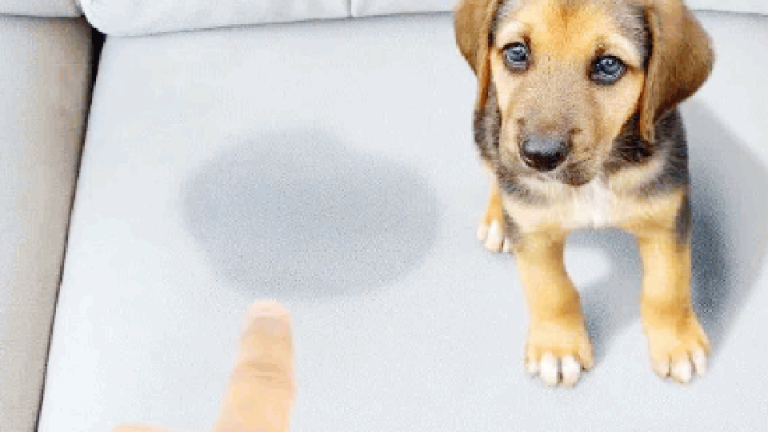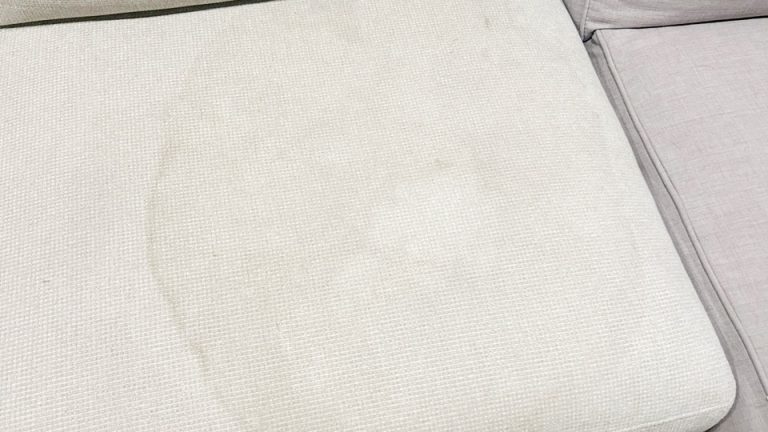As a cleaning enthusiast and homeowner, I’ve dealt with my fair share of messes, but nothing quite prepared me for the challenge of figuring out how to get human pee smell out of a couch. A few years ago, when my toddler had an accident on our living room sofa during potty training, I was horrified to find the odor lingering long after the initial cleanup.
That stubborn, musty smell was a constant reminder of the mishap, and I was determined to find safe, effective solutions that wouldn’t harm my couch’s fabric or my family’s health. After experimenting with natural cleaners like baking soda and vinegar, plus enzyme sprays for tough odors, I’ve perfected a routine that banishes pee smells for good.
I’ll share my step-by-step methods, personal tips, and real-life stories to help you tackle human pee odor on your couch, whether you’re a busy parent or a professional keeping your home spotless.
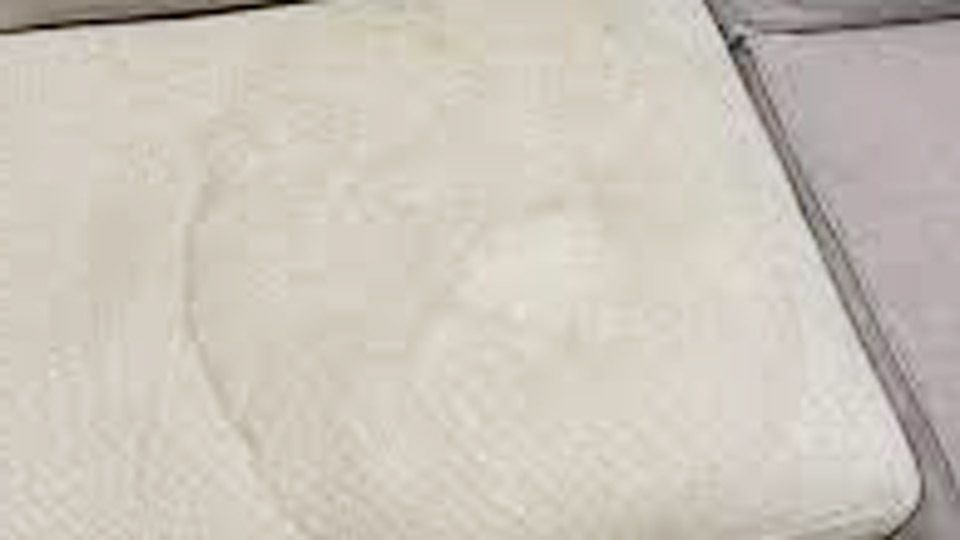
Image by reddit
Why Human Pee Smell on a Couch Is So Stubborn
Human pee smells on a couch are tough because urine soaks deep into the fabric, cushions, and even the foam or wood frame underneath. I learned this when my son’s accident went unnoticed on our microfiber sofa, and the odor set in, creating a lingering problem.
Urine contains proteins and bacteria that break down over time, producing a pungent smell that can be hard to eliminate. Fabrics like microfiber or cotton absorb liquid quickly, trapping odors in layers that surface cleaning can’t reach.
I needed cleaners that could penetrate deep, neutralize smells, and be safe for my family. Natural solutions and enzyme cleaners became my lifesavers, and I’ll show you how they can work for you too.
Understanding Your Couch’s Fabric
Before we start cleaning, let’s talk about couch fabrics. I’ve cleaned microfiber, cotton, and polyester upholstery in my home, and each type needs a different approach. My microfiber sofa is durable but traps odors deep in its fibers. Cotton or linen blends are softer but prone to watermarks if over-wet. Velvet or chenille can fray with harsh scrubbing.
I learned this when I over-scrubbed a cotton cushion and ended up with a fuzzy patch. Check your couch’s care tag (usually under cushions or on the frame) for cleaning codes: “W” means water-based cleaners are okay, “S” means solvent-based only, and “WS” allows both.
Always test cleaners in a hidden spot, like under a cushion, to avoid damage. Knowing your fabric helps you choose the right method to eliminate pee smells.
Gathering Your Odor-Fighting Supplies
To get human pee smell out of a couch, I use a mix of natural and specialized tools. I keep these in my cleaning caddy for quick access when accidents happen. Here’s what I use:
- Baking soda: Absorbs and neutralizes deep odors.
- White vinegar: Breaks down urine residue and helps deodorize.
- Enzyme-based cleaner: Digests urine proteins and eliminates odors.
- Liquid dish soap: Cuts through greasy residue in stains.
- Warm water: Dilutes cleaners for safe application.
- Spray bottle: For even application of solutions.
- Soft-bristle brush or old toothbrush: For gentle scrubbing.
- Microfiber cloths or paper towels: For blotting and wiping.
- Dry towels: To absorb excess moisture.
- Fan or hairdryer (cool setting): To speed drying and prevent mold.
- Protective gloves: To keep hands clean and safe from bacteria.
- Black light (optional): To find hidden urine spots causing odors.
These items are affordable, safe for households, and likely already in your home, making odor removal manageable.
Step-by-Step Guide to Preventing Fresh Pee Odors from Setting In
While this guide focuses on old pee smells, tackling fresh accidents properly can prevent odors from becoming a problem. Here’s how I handle fresh pee on my microfiber sofa to stop smells early:
Blot the Pee Immediately
As soon as I spot a pee accident, I grab paper towels or a microfiber cloth to blot up as much liquid as possible. I press firmly to soak up pee from the fabric, working from the outside in to avoid spreading. I learned to act fast after my son’s accident on our sofa, as delaying let the urine sink deeper, leading to potential odors.
Mix a Vinegar Solution
In a spray bottle, I mix 1 cup white vinegar with 1 cup warm water to dilute the acidity and protect the fabric. I add a drop of liquid dish soap for extra cleaning power. I shake gently to combine. I always test this solution in a hidden spot, as I once caused a watermark on a cushion by skipping this step.
Apply the Solution
I spritz the vinegar solution lightly onto the pee spot, ensuring it penetrates the fabric without soaking it. I let it sit for 10 minutes to break down urine and neutralize potential odors. For delicate fabrics, I dab the solution with a cloth to control moisture.
Sprinkle Baking Soda
I sprinkle 2-3 tablespoons of baking soda over the wet area, causing a fizzing reaction that lifts urine residue. I let it sit for 10-15 minutes to absorb odors. This step prevented a fresh accident from becoming a lingering smell on my sofa.
Scrub Gently
Using a soft-bristle brush, I scrub the area in circular motions to lift residue. For delicate fabrics like cotton, I use a microfiber cloth to avoid fraying. I reapply the vinegar solution if needed for stubborn spots.
Wipe and Rinse
I wipe the area with a damp microfiber cloth to remove residue and baking soda. I rinse the cloth often to avoid spreading urine. I blot with plain water to remove any vinegar or soap, ensuring the fabric isn’t sticky.
Dry Thoroughly
I dry the area with a clean towel, pressing to absorb moisture. I use a fan or hairdryer on a cool setting to ensure the fabric is completely dry, preventing mold or mildew. This step kept my sofa odor-free after a fresh accident.
Tackling Old Pee Smells with Baking Soda and Vinegar
For old, set-in pee smells, like the ones I discovered on my microfiber sofa after my son’s potty-training phase, I use a deeper approach with baking soda and vinegar. Here’s my method:
Locate the Odor Source
I use a black light to find dried urine spots, which glow under the light. This helped me spot a hidden stain on my sofa’s armrest that was causing a persistent odor. If you can’t find the spot, focus on areas where accidents are likely, like where kids or guests sit.
Sprinkle Baking Soda Liberally
I sprinkle ½ to 1 cup of baking soda over the smelly area, ensuring it covers the fabric evenly. I let it sit for 12-24 hours to absorb deep odors. I did this overnight on my sofa, and it significantly reduced the musty smell.
Vacuum Thoroughly
I vacuum the baking soda with a vacuum cleaner, using a brush attachment to lift it from the fabric. I go over the area slowly to ensure all powder is removed, as leftover baking soda can clog cleaning cloths.
Apply a Vinegar Solution
In a spray bottle, I mix 1 cup white vinegar with 1 cup warm water and a drop of dish soap. I spritz lightly over the smelly area, letting it sit for 10-15 minutes to break down urine residue. I dab with a cloth for delicate fabrics to avoid over-wetting. This step tackled a stubborn odor on my sofa.
Scrub Gently
I use a soft-bristle brush to work the solution into the fabric, focusing on seams and crevices where odors hide. I avoid over-scrubbing to prevent fraying, as I once damaged a cotton cushion by being too aggressive.
Wipe and Rinse
I wipe the area with a damp microfiber cloth to remove residue, then blot with plain water to remove any vinegar or soap. I rinse the cloth often to avoid spreading residue.
Dry Thoroughly
I dry the area with a clean towel, then use a fan to ensure the fabric is completely dry. This prevents mold, which I learned after leaving a damp cushion that grew musty.
Using Enzyme Cleaners for Persistent Pee Odors
For really stubborn old pee smells, like on my loveseat where accidents had gone unnoticed, I turn to enzyme-based cleaners. Here’s my process:
Choose a Fabric-Safe Enzyme Cleaner
I pick an enzyme cleaner designed for human urine, ensuring it’s safe for my couch’s fabric. I used one on my loveseat, and the deep odor vanished after one application.
Locate and Test
I use a black light to confirm the smelly spot, then test the enzyme cleaner in a hidden area to ensure it won’t discolor the fabric. This saved my sofa when I realized a cleaner was too strong for its microfiber.
Apply the Cleaner
I spray the enzyme cleaner generously on the smelly area, ensuring it soaks into the fabric and any foam underneath. I let it sit for 15-30 minutes, depending on the product’s instructions. For old odors, I cover with a damp cloth to keep it wet longer.
Blot and Dry
I blot with a microfiber cloth, then wipe with plain water to remove residue. I dry thoroughly with a towel and fan to prevent mold or watermarks. This method eliminated a persistent odor on my loveseat, keeping it fresh.
Why It Works
Enzyme cleaners digest urine proteins and bacteria, neutralizing odors at the source. This was crucial for eliminating deep smells on my couch.
Deep Cleaning Cushion Foam for Old Pee Smells
If the odor has soaked into the foam inside cushions, like on my sofa’s removable cushions, I use a deeper approach:
Remove the Cushion Cover
I unzip the cushion cover and remove it for separate cleaning using the vinegar and baking soda method. This exposes the foam for targeted treatment.
Apply Enzyme Cleaner
I spray an enzyme cleaner directly onto the foam, ensuring it penetrates deeply. I let it sit for 20-30 minutes to break down urine proteins. This tackled a deep odor in my sofa’s cushions.
Blot and Dry
I blot the foam with a dry towel to absorb excess cleaner, then air-dry it with a fan, avoiding direct sunlight to prevent fading. I ensure the foam is completely dry to avoid mold.
Wash the Cover
I wash the cushion cover in a machine (if the care tag allows) with mild detergent, then air-dry to avoid shrinking. This restored my cushions to their original freshness.
Comparing Odor-Removal Methods for a Couch
I’ve tried various methods to get old pee smell out of a couch, and each has its strengths. Here’s a table comparing my top approaches:
| Method | Ingredients/Tools | Pros | Cons | Best For |
|---|---|---|---|---|
| Baking Soda & Vinegar | Vinegar, baking soda, water, dish soap | Natural, affordable, neutralizes odors | Can cause watermarks if over-wet, needs drying | General odor removal |
| Baking Soda Alone | Baking soda, vacuum | Absorbs deep odors, easy to apply | Less effective on urine proteins, needs long sit time | Light odors, maintenance |
| Enzyme Cleaner | Enzyme spray | Breaks down odors, effective for deep smells | More expensive, may need multiple applications | Stubborn odors, deep cleaning |
| Dish Soap Solution | Dish soap, water, cloth | Gentle, safe for most fabrics | Less effective on deep, old odors | Light odors, surface cleaning |
The baking soda and vinegar method is my go-to for general odor removal, while enzyme cleaners are best for persistent smells.
Fabric-Specific Odor-Removal Tips
Different couch fabrics need tailored care. Here’s how I adjust my approach:
Microfiber
My microfiber sofa handles the baking soda and vinegar method well. I use enzyme cleaners for deep odors and dry thoroughly to prevent watermarks.
Cotton or Linen
My cotton accent chair is delicate, so I use enzyme cleaners or mild soap, dabbing gently to avoid watermarks or fraying.
Velvet
My velvet chair needs minimal water and enzyme cleaners. I brush gently after drying to restore the nap.
Cushion Foam
If odors reach the foam, I focus on enzyme cleaners and thorough drying to prevent mold, as I learned after a damp cushion grew musty.
Preventing Pee Odors on a Couch
Keeping my couch odor-free is easier with preventative habits. Here’s what I do:
Clean Up Immediately
I blot pee right away with paper towels to prevent it from soaking in. This saved my sofa from my son’s accidents becoming lasting odors.
Use Protective Covers
I use washable slipcovers on my sofa during potty-training phases. They’re easy to clean and protect the fabric.
Regular Maintenance
I vacuum my couch weekly and sprinkle baking soda monthly to absorb minor odors, keeping it fresh.
Control Humidity
I use a dehumidifier in humid rooms to prevent mold, which can worsen pee odors in fabric.
Extra Odor-Fighting Hacks I Love
Here are some tricks I’ve picked up to make odor removal easier:
- Black Light for Hidden Spots: I use a black light to find dried pee spots that glow, like on my sofa’s armrest where an accident went unnoticed.
- Baking Soda Overnight: I sprinkle baking soda on the couch overnight to absorb odors, then vacuum it up in the morning.
- Charcoal Sachets: I place activated charcoal sachets under cushions for ongoing odor absorption between cleanings.
You’re Ready to Keep Your Couch Odor-Free!
Mastering how to get human pee smell out of a couch has been a game-changer for my home, and I’m thrilled to share my methods with you. With natural solutions like baking soda and vinegar, plus enzyme cleaners for stubborn odors, you can keep your couch fresh and family-friendly.
My step-by-step guide and tips make it easy to tackle smells, no matter how busy life gets. Your couch deserves to be fresh and inviting, and you’ve got the tools to make it happen.
Frequently Asked Questions
Can I use vinegar on all couch fabrics to remove old pee smells?
Vinegar is safe for most fabrics when diluted, but I test a hidden area first, especially on delicate cotton or velvet, to avoid discoloration or watermarks.
How long does it take to remove old pee smell from a couch?
For light odors, my baking soda and vinegar method takes about 30 minutes, plus drying. Stubborn odors with enzyme cleaners may need 45 minutes to an hour.
Will these cleaners eliminate old pee odors completely?
Yes, my baking soda and enzyme cleaner methods neutralize odors. Enzyme cleaners are especially effective for deep, set-in smells.
What if the pee smell persists after cleaning?
If odors linger, I reapply an enzyme cleaner and let it sit longer, up to 30 minutes. I also check for hidden spots with a black light.
Are these cleaners safe for homes with kids?
Yes, my methods are safe and non-toxic when rinsed properly. I dry thoroughly to avoid residue that kids might touch.

